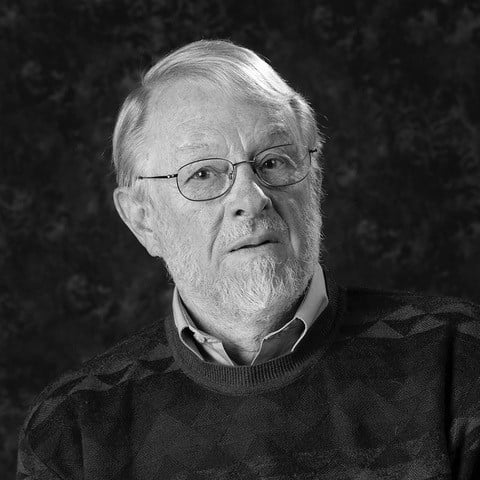A Population Health Boot Camp
David KindigThree summers ago I hosted a Population Health “Boot Camp” for second-year medical students and a small group of staff in the University of Wisconsin-Madison Population Health Institute. Of course, there is no precise way to identify the most important contributions to population health literature…any selection will have substantial personal bias. The only similar effort I am aware of was done by the faculty of the Robert Wood Johnson Health and Society Scholars (HHS) program in 2016 called What is Population Health Research?, but this list wasn’t widely disseminated.
During this COVID-19 isolation time, I put together my own list, which includes many identified by HSS. I hope it will be useful to new scholars and faculty members who may not be fully aware of the late-twentieth-century origins (some would say rediscovery) of the field 30 or 40 years ago. As the list got longer, and since population health requires choices, I marked with an asterisk* those I would choose for a Boot Camp if I had time for only 12 articles.
My Canadian epiphany
Even though I had a rich “community health” background (as the first Social Medicine Resident at Montefiore and the Martin Luther King OEO Health Center in 1969 and the first Medical Director of the National Health Service Corps in 1971), my own population health epiphany occurred in the late 1980s at several meetings of the Canadian Population Health Program of the Canadian Institutes for Advanced Research, where I saw early drafts of (for me) the most seminal Evans and Stoddart paper.
1. Evans R and Stoddart G. “Producing Health, Consuming Health Care,” Social Science & Medicine 31(12),1347-1363, 1990.*
I was intellectually blown away by the evolution of their models going beyond illness as the only outcome to health and function and even well-being, and moving beyond medical care as the only determinant, adding in behaviors and the social and physical environments. And still important today, the only italicized sentence in the paper: “a society that spends so much on health care that it cannot or will not spend adequately on other health enhancing activities may actually be reducing the health of its population.” Most of my thinking since then derives directly from this paper, including the County Health Rankings model, which should be understood as derived and adapted from their figure 1.5 field model.
The paper later appeared as Chapter 2 of the seminal 1994 book…
2. Evans R, Barer M, and Marmour T. Why Are Some People Healthy and Others Not? The Determinants of Health of Populations. New York: Aldine de Gruyter, 1994.
The following chapters explain more about how–if it’s not primarily medical care and not primarily genetics–the significant importance of the social determinants of health. It was my introduction to the also classic Marmot-Whitehall studies showing the social gradient….
3. Marmot M, Rose G, Shipley M, and Hamilton P.” Employment Grade and Coronary Health Disease in British Civil Servants,” Journal of Epidemiology and Community Health 32:244-49, 1978. *
…as well as the stress and immunobiology showing how the social determinants can get under the skin to cause disease. I so clearly remember being in awe as a pediatrician and molecular biology PhD that I had to learn about this from Canadian economists! This Chapter 6 deserves seminal status…
4. Barer M., et al., Chapter 6, “If Not Genetics, Then What? Biological Pathways and Population Health” (R. G. Evans, M. Hodge, I. B. Pless) in Why Are Some People Healthy and Others Not? The Determinants of Population Health. New York: Routledge, 1994.*
…bringing to relevance the critical work of that period of Sapolsky and others regarding animal stress biology.
5. Sapolsky R. “Stress in the Wild,” Scientific American 262(1):116-23, 1990.
Earlier critical antecedents
These two are early classics on the role of behaviors:
6. Lalonde M. A New Perspective on the Health of Canadians. A Working Document. Ottawa: Government of Canada, 1974.
7. Richmond J. Healthy People: Surgeon General’s Report on Health Promotion and Disease Prevention, U.S. Public Health Service, Washington DC, Chapter 1 and Table of Contents, 1979.
These next five sources include the seminal 1972 Grossman piece on health production and four others that begin to critically assess the role of medical care, with Wennberg starting the science of small area analysis by showing large variation in medical procedures not related to underlying disease, and Starr highlighting the social and professional forces that propelled the expansion of medical care without controls. This is, of course, critical, as medical care expenditures crowded out resources for other determinants. I include the Alan Williams piece not only because this leading European health economist was my sabbatical mentor at York but also because this early article helped stimulate the measurement and value discussion of tradeoffs between length and quality of life.
8. Grossman M. “On the Concept of Health Capital and the Demand for Health,” Journal of the Political Economy 80(2): 223–255, 1972.
9. McKeown T. The Role of Medicine: Dream, Mirage or Nemesis? London, UK: Nuffield Provincial Hospital Trust, 1976. ISBN 978-0-900574-24-5.
10. Wennberg J and Gittlesohn A. “Small Area Variations in Health Care Delivery,” Science 14 (182), Issue 4117, pp. 1102-1108, 1973.
11. Starr P. The Social Transformation of American Medicine. Basic Books, New York, 1982.
12. Williams A. “Economics of Coronary Artery Bypass Grafting,” British Medical Journal 291:326-29, 1986.
These next two called early attention to social relationships and health. I remember being shocked to read the House assertion that such factors were equivalent in magnitude to smoking.
13. Berkman, L. “Assessing the Physical Health Effects of Social Networks and Social Support,” Annual Review of Public Health 5:413-32, 1984.
14. House J, Landis K, and Umberson D. “Social Relationships and Health,” Science 241: 540-545, 1988. *
And this next one by Rose stands conceptually alone in its seminal importance with 4526 citations…the Prevention Paradox and the tradeoffs between individual care and broader population interventions. This remains absolutely relevant in 2020, particularly in light of the emergence of genomics and precision medicine.
15. Rose G. “Sick Individuals and Sick Populations,” International Journal of Epidemiology 14:32–38, 1985. *
The more rapid U.S. catch-up in the 1990s
The McGinnis and Foege paper was the American equivalent of the Canadian LaLonde report driving home–with 4243 citations–the critical role of health behaviors…
16. McGinnis M and Foege W. “Actual Causes of Death in the United States,” Journal of the American Medical Association 270 (18):2207-12, 1993. *
…while Link and Phelan (with 4928 citations) illuminated fundamental causes as social factors impacting more than one disease, and others expanding the emerging understanding of the social determinants of health. It was certainly a landmark when the obscure field of social epidemiology emerged in 2000 with its own Berkman and Kawachi textbook.
17. Link BG and Phelan J. “Social Conditions As Fundamental Causes of Disease,” Journal of Health and Social Behavior. Extra Issue: Forty Years of Medical Sociology: The State of the Art and Directions for the Future, pp. 80-94, 1995.*
18. Adler NE. Socioeconomic Status and Health: The Challenge of the Gradient. American Psychologist 49:15-24, 1994.
19. Lantz PM, House JS, Lepkowski, JM et al. “Socioeconomic Factors, Health Behaviors, and Mortality. Results From a Nationally Representative Prospective Study of US Adults,” Journal of the American Medical Association 279(21):1703-1708. 1860, 1998. *
20. Berkman LF, Kawachi I. Social Epidemiology. New York: Oxford University Press, 2000.
The Gold et al., 2002 was a widely heralded introduction to summary measures of population health, and McGinnis et al. was an expansion of his earlier thinking, bringing in the social determinants of health in addition to behaviors, with an eye to balancing policy attention and investment across the categories.
21. Gold, MR et al. “HALYs and QALYs and DALYs, Oh My: Similarities and Differences in Summary Measures of Population Health,” Annual Review of Public Health 23: 115-134, 2002.
22. McGinnis M, Williams-Russo P, and Kinckman J, The Case For More Active Policy Attention To Health Promotion, Health Affairs 21(2), 2002 .*
This next small two-page piece may not appear relevant, but they continue the sad history from the Paul Star book of uncontrolled growth of medical care expenditures and this impact on resources for other determinants.
23. Altman D and Levitt L. “The Sad History Of Health Care Cost Containment As Told In One Chart,” Health Affairs 21 (Suppl 1), 2002.
It is risky, of course, to list one’s own work as seminal, but our definition of population health seems to have survived over the 17 years. Someone (not me) even put it in Wikipedia: “the health outcomes of a group of individuals, including the distribution of such outcomes within the group.” This was an intentionally much simplified version (at the price of losing some precision) of the original definition in my sabbatical book: “the aggregate health outcome of health-adjusted life expectancy (quantity and quality) of a group of individuals, in an economic framework that balances the relative marginal returns from the multiple determinants of health” (I’ll mention the book here as #23 ½: Kindig, D. Purchasing Population Health: Paying for Results. University of Michigan Press: Ann Arbor, 1997).
24. Kindig D and Stoddart G. “What Is Population Health?,” American Journal of Public Health 93 (3): 380–83, 2003. *
What about inequalities and inequity?
In compling this list, I initially did not personally recall many seminal articles on health disparities and equity in this time period, surprising to me given the dominance of those topics today. Even though the 1994 Evans book was titled Why Are Some Populations Healthy and Others Not?, generally implying disparities, it had only Chapter 3 by Clyde Hertzman and colleagues on Heterogeneities in Health Status. This was, however, a very broad treatment primarily focusing on social class differences with “racial/immigration” briefly mentioned as one population “partition” (perhaps a Canadian oversight?) and the word inequity mentioned once but not further developed. In our definition above, we mentioned “distribution of such outcomes within the group,” but without much elaboration except that an outcome-focused definition “allows one to consider health inequality and inequity and the distribution of health across subpopulations, as well as the ethical and value considerations underpinning these issues,”
My equity colleague Lawrence Brown has reminded me of the early work of DuBois (W. E. B. Du Bois, The Philadelphia Negro: A Social Study, ~1899) but this anthology has a much more contemporary focus. Yukiko Asada reminded me that in 2002 James Macinko and Barbara Starfield produced an “Annotated Bibliography on Equity in Health, 1980-2001” (International Journal for Equity in Health 2002, 1:1-20) which lists 69 equity articles from this period. I find it interesting that many on this list are European, and those from the U.S. often focus on health CARE disparity/equity issues. I drew several from their article in my list below.
25. Black D, Morris J, Smith C, and Townsend P. Inequalities in Health: The Black Report. Middlesex:Penguin, 1982.
26. Wagstaff A. QALYs and the Equity-Efficiency Trade-Off,” Journal of Health Economics 10(1):21-41, 1991.
27. Whitehead M. “The Concepts and Principles of Equity and Health.” International Journal of Health Services 22(3):429-45, 1992. *
28. Williams DR. “Race/ethnicity and Socioeconomic Status: Measurement and Methodological Issues,” International Journal of Health Services 26(3):483-505,1996. *
29. Williams DR. Race and Health: Basic Questions, Emerging Directions,” Annals of Epidemiology Jul;7(5):322-33, 1997.
30. Williams A. “Intergenerational Equity: An Exploration of the ‘Fair Innings’ Argument.” Health Economics 6(2):117-32, 1997.
31. Murray C, Gakidou E, Frenk J. “Health inequalities and social group differences: what should we measure?” Bulletin of the World Health Organization 77(7):537-43, 1999.
32. Jones C. “Levels of Racism: A Theoretic Framework and a Gardener’s Tale. American Journal of Public Health 90 (8): 1212-1215, 2000.
33. Starfield B. “Improving Equity in Health: A Research Agenda,” International Journal of Health Services 31(3):545-66, 2001.
34. Adler NE, Newman K. Socioeconomic Disparities In Health: Pathways And Policies. Health Affairs 21(2): 60-77, 2002.
35. Kawachi I, Subramanian S, Almeida-Filho N. “A Glossary for Health Inequalities,” Journal of Epidemiology and Community Health 56:647–652, 2002.*
Conclusion
As I indicated initially, I hope this list will be useful to new scholars in the field and to faculty members preparing courses in population health and related fields. I expect that several choices would be near unanimous, but others perhaps controversial, and of course there will be omissions. I welcome comments in any direction and will repost any of them that will add to the collection.
Acknowledgement
I wish to thank my colleagues John Mullahy, Stephanie Robert, Lawrence Brown, Sheri Johnson, Michael McGinnis, Pamela Russo, Yukiko Asada, and Christine Bachrach for their suggestions. I take full responsibility for the choices and commentary.






All comments will be reviewed and posted if substantive and of general interest to IAPHS readers.